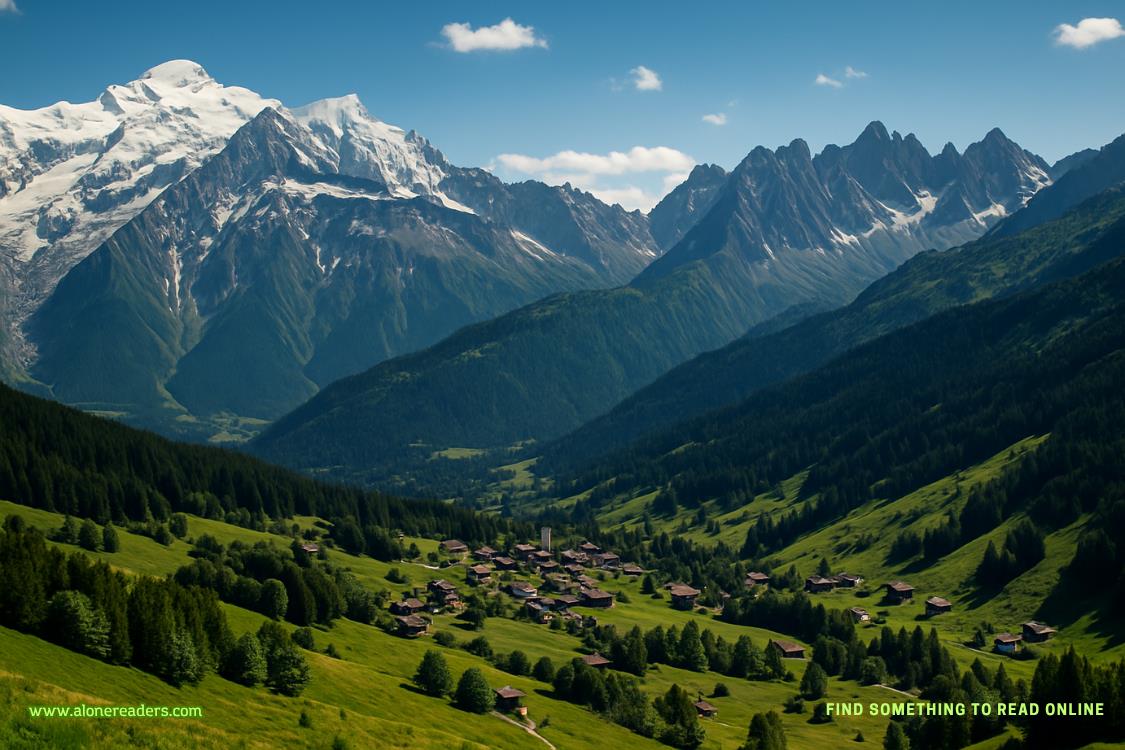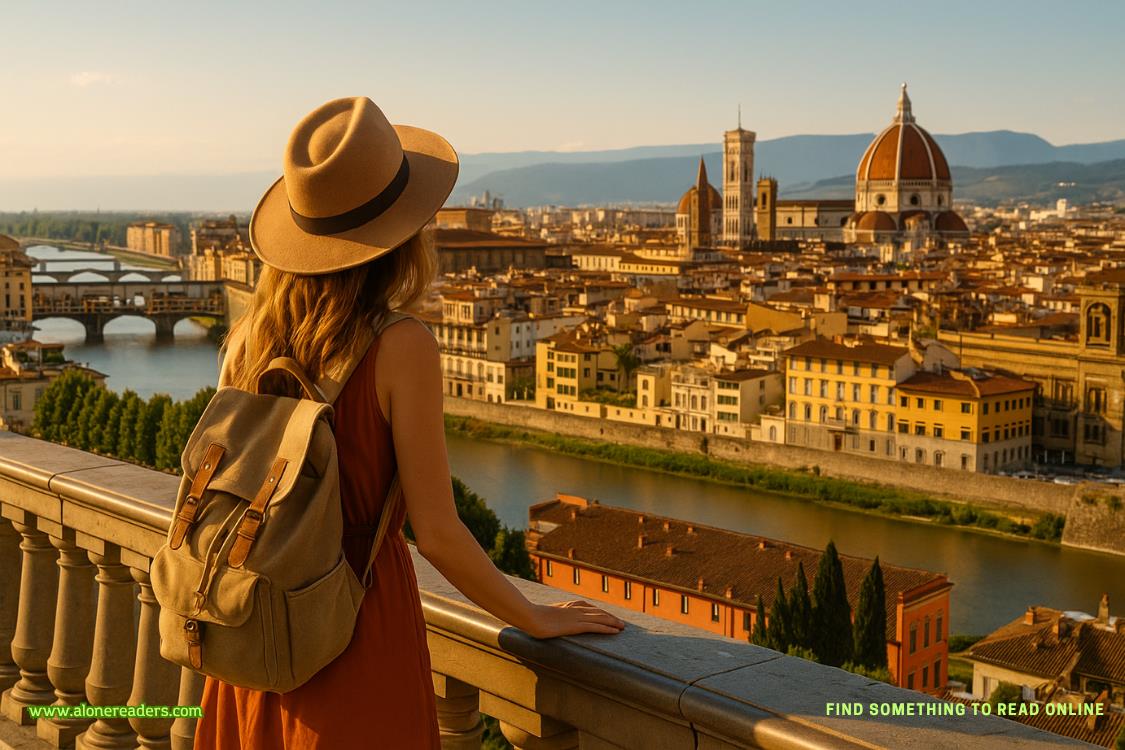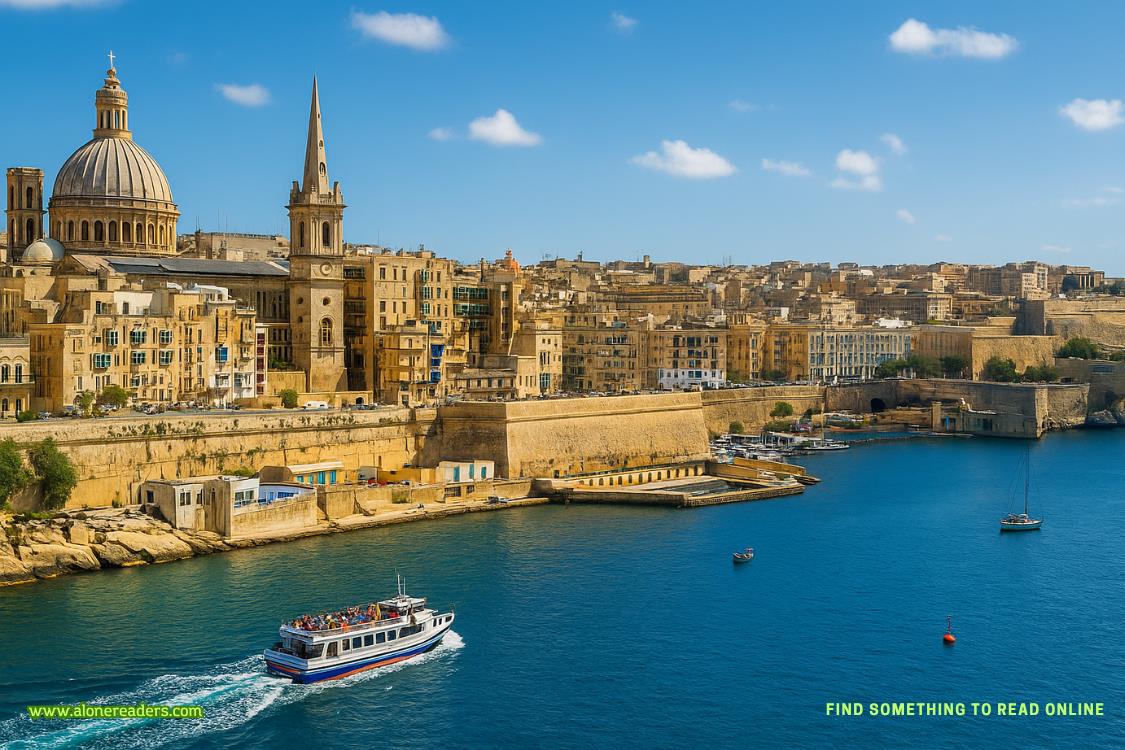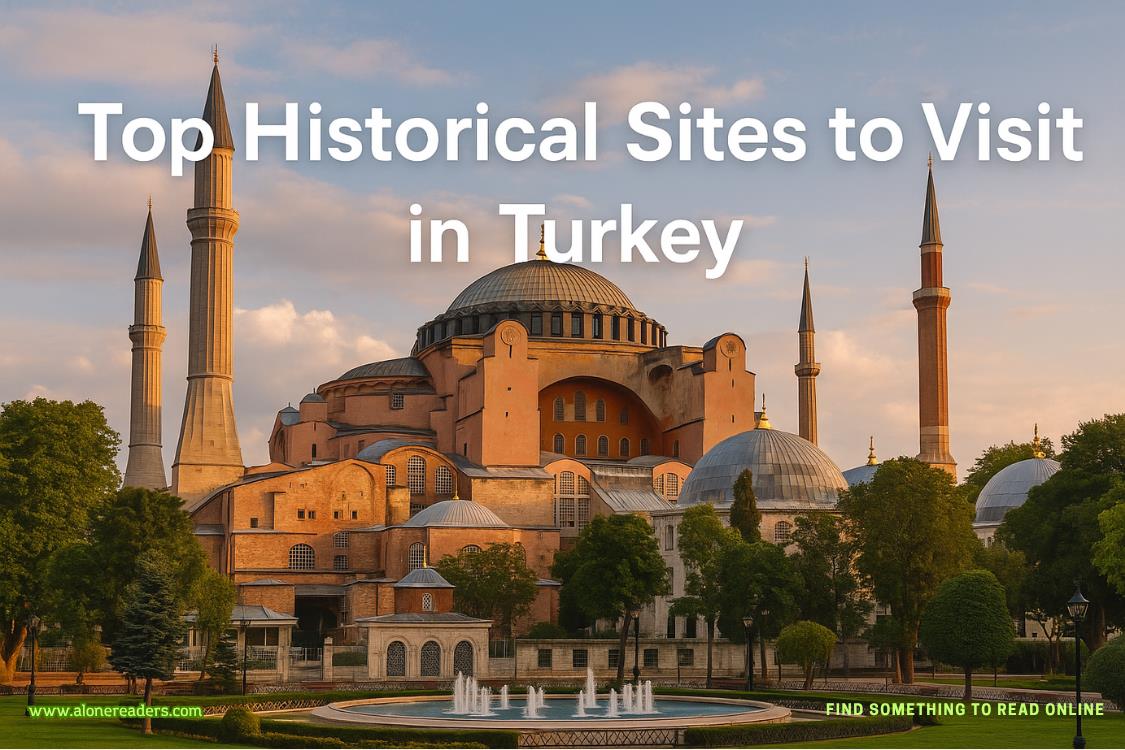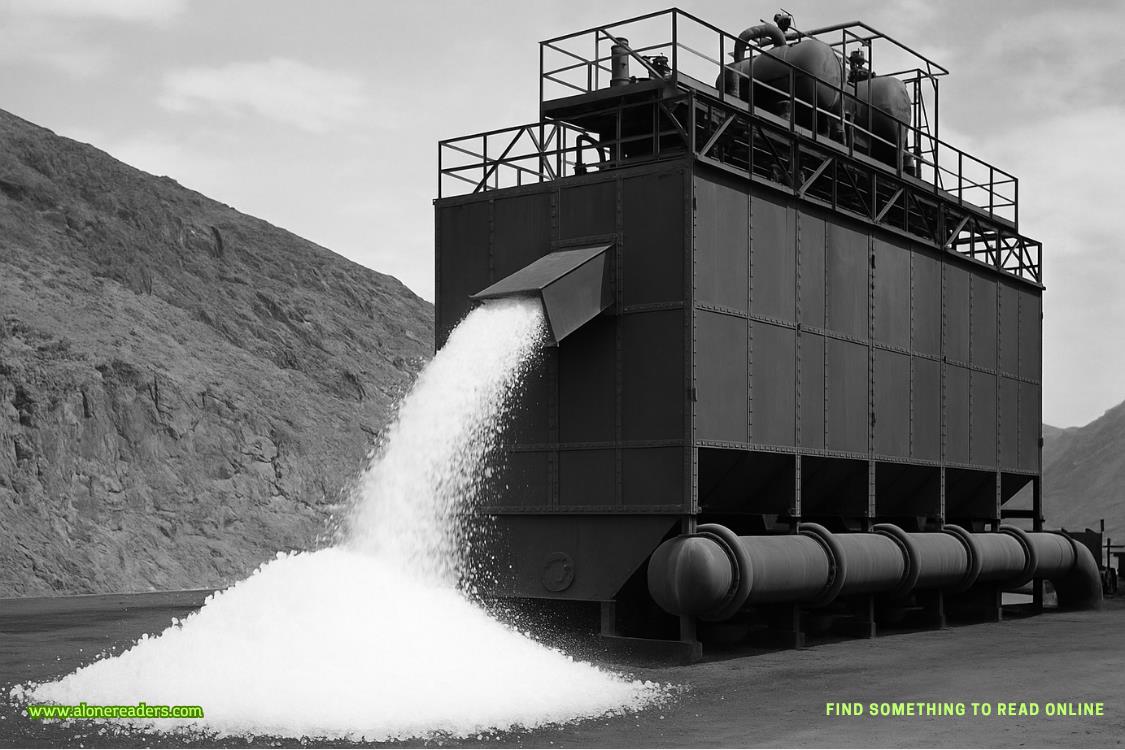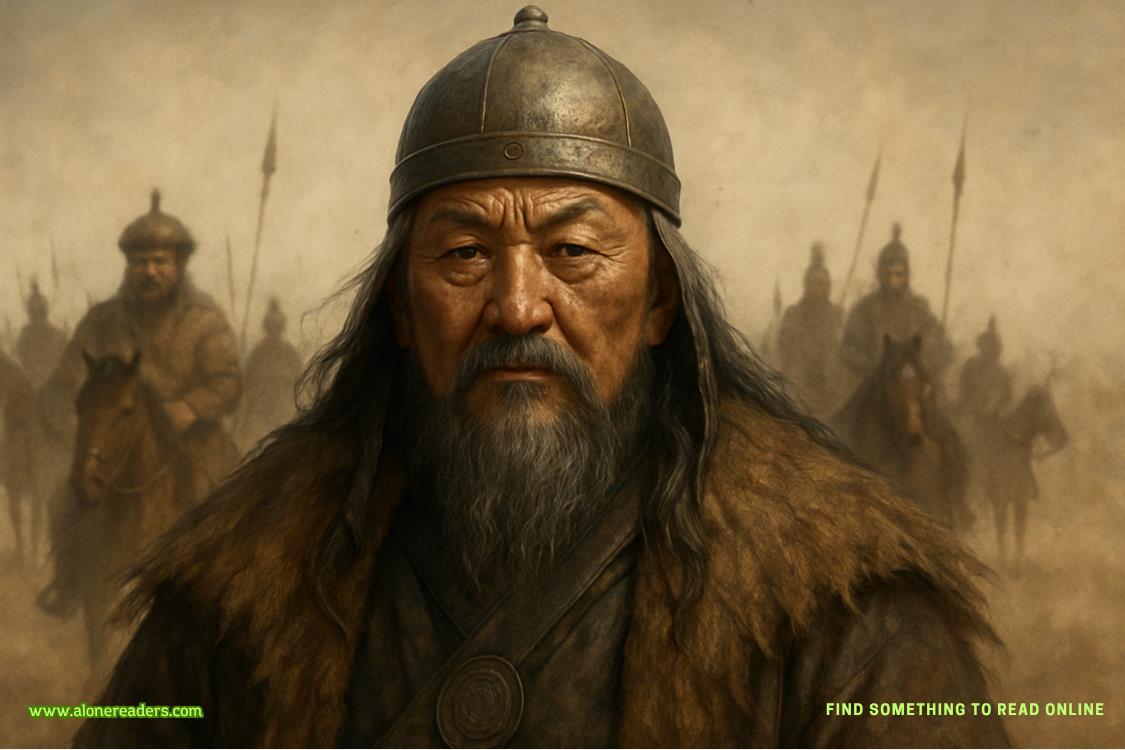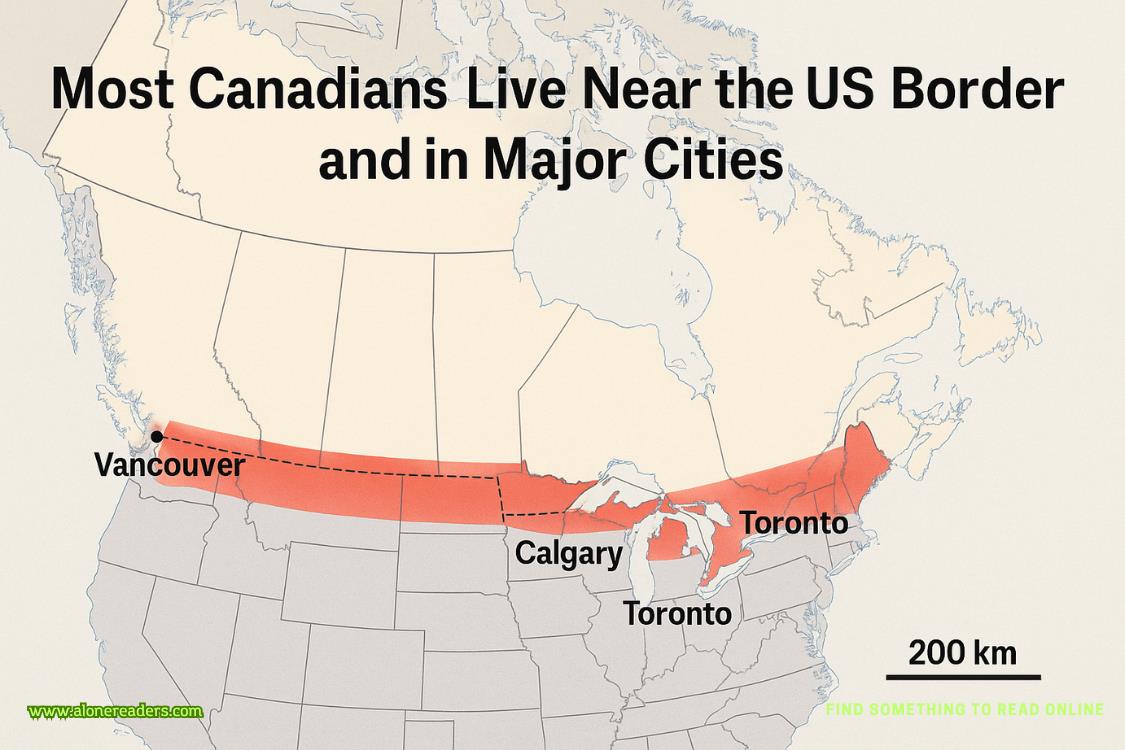“It was Paulina, the new girl. She was hoping to observe you while you worked.”
“I assume you disabused her of that notion.”
“In no uncertain terms. She said you could have any part of the painting you wanted, except for the Virgin.”
Gabriel lifted his gaze toward the upper reaches of the towering canvas. Miriam, the three-year-old daughter of Joachim and Anne, Jews from Nazareth, was hesitantly climbing the fifteen steps of the Temple of Jerusalem toward the high priest. A few steps below reclined a woman robed in brown silk. She was holding a young child, a boy or girl, it was impossible to tell.
“Her,” said Gabriel. “And the child.”
“Are you sure? They need a great deal of work.”
Gabriel smiled sadly, his eyes on the canvas. “It’s the least I can do for them.”
He remained in the churchuntil two o’clock, longer than he had intended. That evening he and Chiara left the children with their grandparents and dined alone in a restaurant on the other side of the Grand Canal in San Polo. The next day, Thursday, he took the children on a gondola ride in the morning and worked on the Tintoretto from midday until five, when Tiepolo locked the church’s doors for the night.
Chiara decided to prepare dinner at the apartment. Afterward, Gabriel supervised the nightly running battle known asbath time before retreating to the shelter of the chuppah to deal with a minor crisis at home. It was nearly one by the time he crawled into bed. Chiara was reading a novel, oblivious to the television, which was muted. On the screen was a live shot of St. Peter’s Basilica. Gabriel raised the volume and learned that an old friend had died.
3
Cannaregio, Venice
Later that morningthe body of His Holiness Pope Paul VII was moved to the Sala Clementina on the second floor of the Apostolic Palace. It remained there until early the following afternoon, when it was transferred in solemn procession to St. Peter’s Basilica for two days of public viewing. Four Swiss Guards stood watch around the dead pontiff, halberds at the ready. The Vatican press corps made much of the fact that Archbishop Luigi Donati, the Holy Father’s closest aide and confidant, rarely left his master’s side.
Church tradition dictated that the funeral and burial of the pope occur four to six days after his death. Cardinal Camerlengo Domenico Albanese announced that it would take place the following Tuesday and that the conclave would convene ten days after that. Thevaticanistiwere predicting a hard-foughtand divisive contest between reformers and conservatives. The smart money was on Cardinal José Maria Navarro, who had used his position as the Church’s doctrinal gatekeeper to build a power base within the College of Cardinals that rivaled even the dead pope’s.
In Venice, where Pietro Lucchesi had reigned as patriarch, the mayor declared three days of mourning. The bells of the city were silent, and a moderately attended prayer service was held in St. Mark’s Basilica. Otherwise, life went on as normal. A minoracqua altaflooded a portion of Santa Croce; a colossal cruise ship plowed into a wharf on the Giudecca Canal. In the bars where locals gathered for coffee or a glass of brandy against the autumn chill, one rarely heard the dead pontiff’s name. Cynical by nature, few Venetians bothered to attend Mass on a regular basis, and fewer still lived their lives in accordance with the teachings of the men from the Vatican. The churches of Venice, the most beautiful in all of Christendom, were places where foreign tourists went to gawk at Renaissance art.
Gabriel, however, followed the events in Rome with more than a passing interest. On the morning of the pope’s funeral, he arrived at the church early and worked without interruption until twelve fifteen, when he heard the hollow echo of footfalls in the nave. He raised his magnifying visor and cautiously parted the tarpaulin shroud that covered his platform. General Cesare Ferrari, commander of the carabinieri’s Division for the Defense of Cultural Patrimony, better known as the Art Squad, returned his gaze without expression.
Uninvited, the general stepped behind the shroud and contemplated the enormous canvas, which was awash in the searing white light of two halogen lamps. “One of his better ones, don’t you think?”
“He was under enormous pressure to prove himself. Veronese had been publicly recognized as the successor of Titian and the finest painter in Venice. Poor Tintoretto was no longer receiving the sort of commissions he once did.”
“This was his parish church.”
“You don’t say.”
“He lived around the corner on the Fondamenta di Mori.” The general swept aside the tarpaulin and went into the nave. “There used to be a Bellini in this church.Madonna with Child. It was stolen in 1993. The Art Squad has been looking for it ever since.” He peered at Gabriel over his shoulder. “You haven’t seen it, have you?”
Gabriel smiled. Shortly before becoming chief of the Office, he had recovered the most sought-after stolen painting in the world, Caravaggio’sNativity with St. Francis and St. Lawrence. He had made certain that the Art Squad received all the credit. It was for that reason, among others, that General Ferrari had agreed to provide round-the-clock security for Gabriel and his family during their Venetian holiday.
“You’re supposed to be relaxing,” said the general.
Gabriel lowered his magnifying visor. “I am.”
“Any problems?”
“For inexplicable reasons, I’m having a bit of trouble re-creating the color of this woman’s garment.”
“I was referring to your security.”
“It seems my return to Venice has gone unnoticed.”
“Not entirely.” The general glanced at his wristwatch. “I don’t suppose I could convince you to take a break for lunch?”
“I never eat lunch when I’m working.”
“Yes, I know.” The general switched off the halogen lamps. “I remember.”




